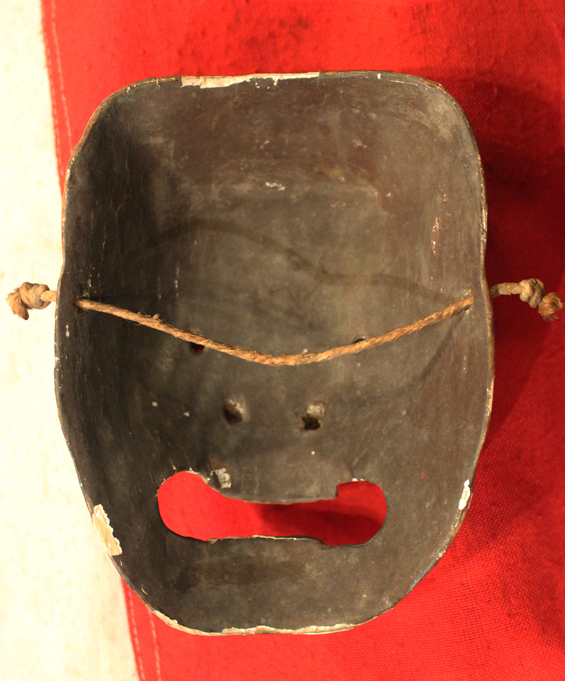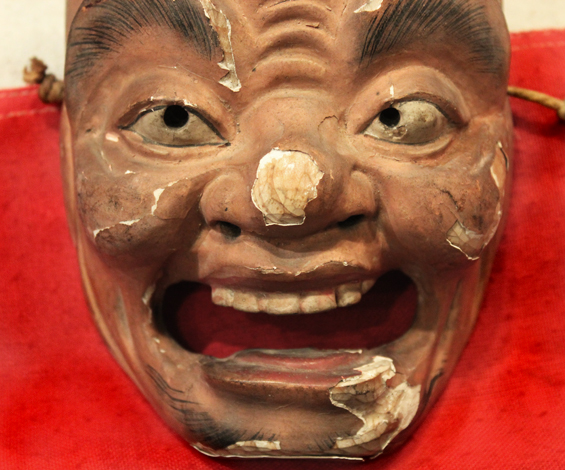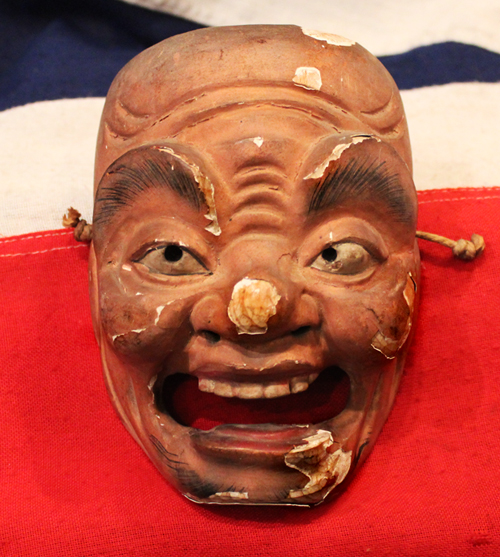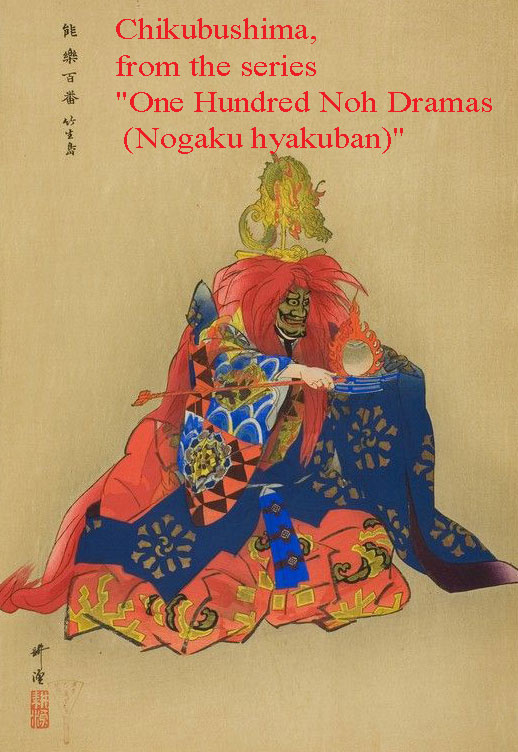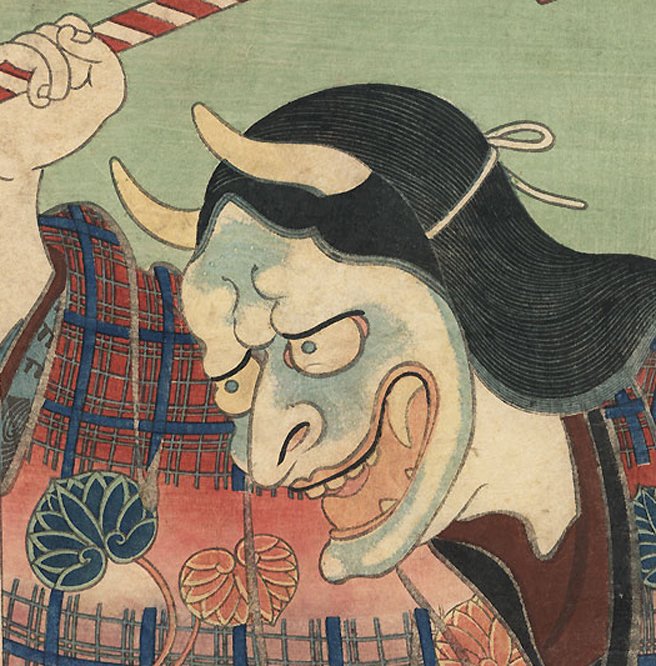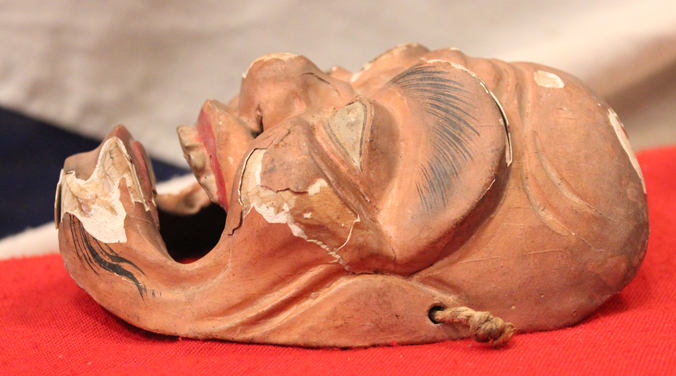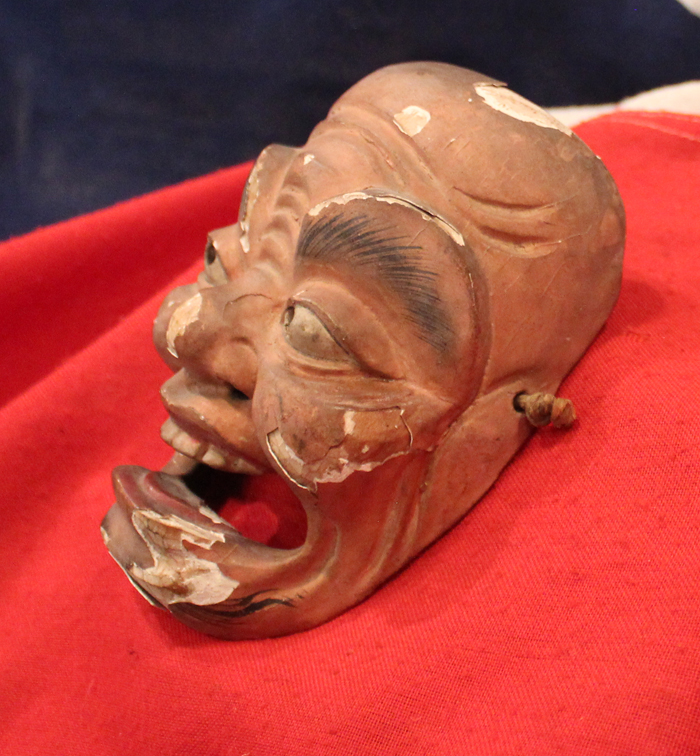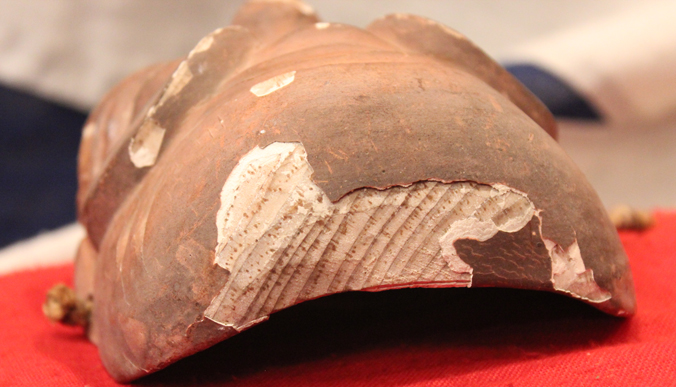A Delightful Edo Period 1600 Japanese Noh Mask, Possibly Amazakuro Akujo
From the ancient Japanese tradition of mask drama that can trace its origins to the Bugaku Imperial Court dancing of the 9th century. Noh is the classical theatre of Japan which was codified in the 14th century under the father and son actors Kan'ami and Zeami under the patronage of the Shogun (supreme military leader) Ashikaga Yoshimitsu. The performances utilise masks and elaborate costume. This is a substantial though small size mask, robustly carved from a thick piece of hinoki, with the carving confidently executed. The original colour of the mask appears to be of a predominantly a pinkish skin colour over a very thin layer of gofun, with details of the lips painted in red. The whites of the deep-set eyes are with details. The high domed forehead and the raised eyebrows together with the delicately carved wrinkles add to the overall image of a benevolent deity. It is significant that the mask is called Omote, which means the front surface facing the audience. But there is a reverse side, too, called Ura, behind which the actor conceals himself. Unlike the smooth finished outer surface of a Noh mask, the Ura is a roughly finished indented shell with just two tiny holes, more rudimentary than what we might call eyes. By including himself in this primitive space, the Noh actor transforms himself into a person of another world and attempts to draw the audience after him, by radiating a sense of the existence and non existence of an inhabitant of that other world. This mask is of symbolic size, not a wearing type.
The Ayakashi mask expresses god or ghost possessed of mysterious powers. It is also used for a vindictive warrior. Okina (Old man masks) This type of mask originated from sarugaku, the predecessor of noh, in the latter part of the Heian period. This is the oldest type of noh mask.
The surface still has a large proportion of fleshy skin tones remaining, with areas of loses overall. This intriguing piece would make a superb display piece of famous Japanese traditional art.
6 inches x 4.25 inches.
Code: 20901
895.00 GBP


